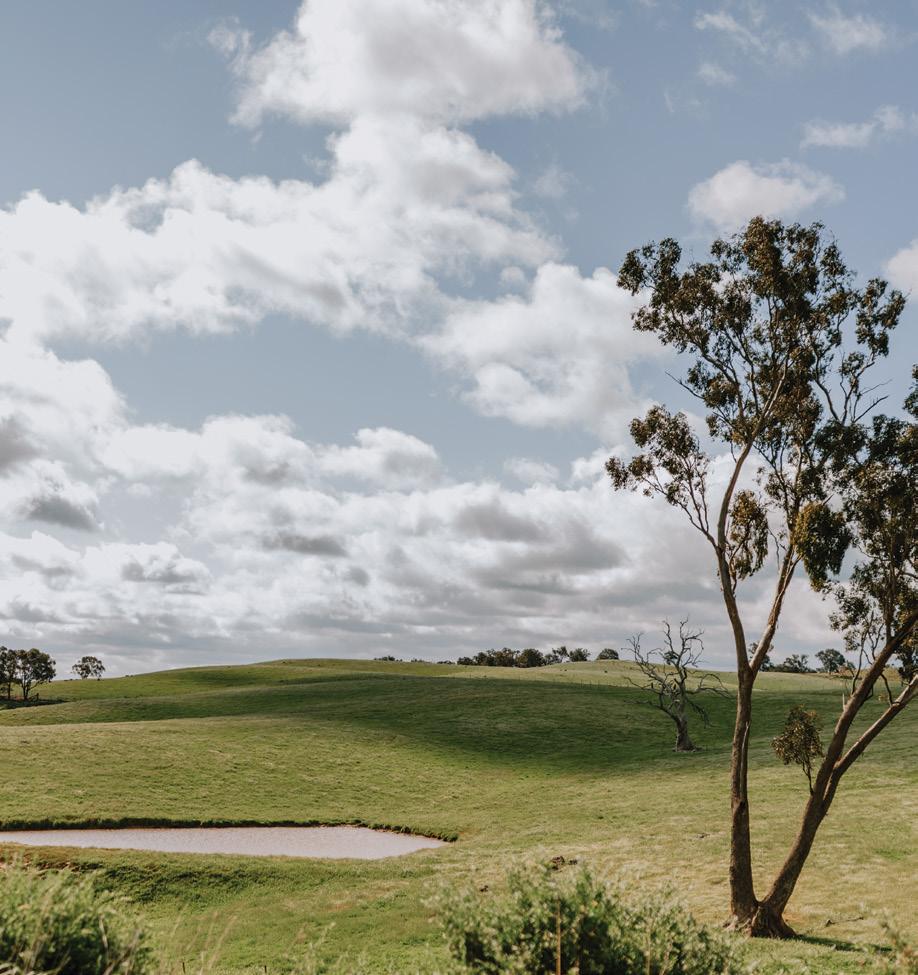
4 minute read
The Road Less Travelled: Franklinford
Saralinda Turner
It’s very easy when travelling to, and within, the Daylesford Macedon Region to arrow straight towards those lauded places that have become iconic of the district. And yet in these times of taking stock and slowing down, perhaps the area less-visited awaits our appreciation. Franklinford, one such small community in the Hepburn Shire, is a quiet treasure trove for absorbing the history and natural beauty.
The area is particularly significant for its Aboriginal narrative – for thousands of years as Larne-ne-barramul, or Habitat of the Emu, occupied, cultivated and cared for by the Dja Dja Wurrung Traditional Owners, and then in the mid-1800s as the site of the Loddon Aboriginal Protectorate Station.
European squatters, claiming the region’s fertile land for farming and agriculture, had a catastrophic effect on local Aboriginal clans, who were displaced from their lands and disconnected from their Country. In 1838, Englishman Edward Stone Parker, an anti-slavery proponent and devout Methodist, was appointed Assistant Protector of Aboriginals in the Loddon and Northwest District, part of a larger Port Phillip Protectorate.
Following his journey from London and a few false starts at other sites, Parker settled with his wife and children

in 1841 on a site north of Mount Franklin (Lalgambook), establishing a mission with the twin aims of safeguarding and ‘civilising’ the local indigenous population. It is estimated that up to 200 Aboriginal people lived within the protectorate boundaries during the 1840s. Still, the protectorate project was relatively short-lived, and the Loddon Aboriginal Station was closed in 1849. Although several Aboriginal families stayed on in Franklinford, by 1864 this chapter in the community’s history was irrevocably closed, with the remaining Dja Dja Wurrung peoples forcibly moved to Coranderrk Station near Healesville.
Small reminders of this period of Franklinford’s history can be found dotted around the area. A cairn commemorating Parker was erected in 1965 (100 years after his death), while Parker’s grave can be found in the quietly tranquil Franklinford Cemetery. Behind the memorial cairn, a sign with wrought-iron script reads ‘Larnebarramul Sanctuary’, a diminutive tribute to thousands of years of traditional ownership.
Just around the corner from the cairn and sign lies a somewhat different memorial. A bronze plaque, affixed to a jutting jab of rock, celebrates ‘A Precinct For Gods’. Although two church buildings sit in the vicinity of this marker, the words refer not to them, but religious structures from a purported parallel universe – known as

Kcymaerxthaere – with similar physical characteristics to our own. If that all sounds rather esoteric, it is – this installation is the work of filmmaker, artist and storyteller Eames Demetrios, and joins more than 140 such sites around the world.
Lucky enough to live in Franklinford in our plane of existence, sculptor Issa Ouattara, originally from the Cote D’Ivoire, resides with his family in the former Franklinford Methodist Church. A small triangle of land, stretching from the church down toward the ES Parker cairn, cradles Issa’s outdoor sculpture gallery, his large figurative pieces shaded by native trees.
Issa works predominantly with mild steel, allowing the elements to give each piece an attractive rust-bronze exterior. Ranging from the functional – moulded benches and storage vessels for firewood – to the ecstatic – feminine figures that dance and stretch
towards the sky, Issa’s work is imbued with positive and joyful energy. A stroll through the garden – serenaded by frogs and carolling magpies, is an essential Franklinford experience.
Alongside Issa’s striking sculptures, other local Franklinford residents are busy providing us with more pragmatic, but no less welcome, fare. The wines produced by Mafic by Mount Franklin Estate, available through their online shop (there is no cellar door at present), speak of the volcanic soil in which the vines grow. For a reminder of languid summer afternoons, the Dolcetto Rosé is a cracker.
Down the road, Lucy Nairn at Pennyweight Farm grows a gorgeous tumble of flowers that she sells wholesale to florists and designers. Her blooms, grown without the use of synthetic chemicals, can also be purchased through an innovative subscription service.
Driving deeper into Franklinford’s country scape allows for further bucolic discovery. Panoramic views, picturesque drystone walls and rolling hills sing the slow song of the seasons. To stretch your legs amid this beauty, detour to the Franklinford Streamside Reserve. This small nature reserve is home to a hairpin bend of the Jim Crow Creek and hosts abundant birdlife, and a splendid scatter of rocks carpeted by technicolour moss and picnic-space aplenty. Nature as therapy has never been so necessary, and this tiny slice of Franklinford is surely just what the doctor ordered.

Issa Ouattara Sculpture Garden issaouttarasculpture.com.au Kcymaerxthaere kcymaerxthaere.com Mafic by Mount Franklin Estate mtfranklinestate.com.au Pennyweight Farm pennyweightfarm.com.au
Photos (opposite page L-R): former Aboriginal school, scenic Franklinford, Issa Ouattara, sculptor Photography by Clair Derwort
Franklinford Cemetery
Sault Restaurant (property not for sale)











